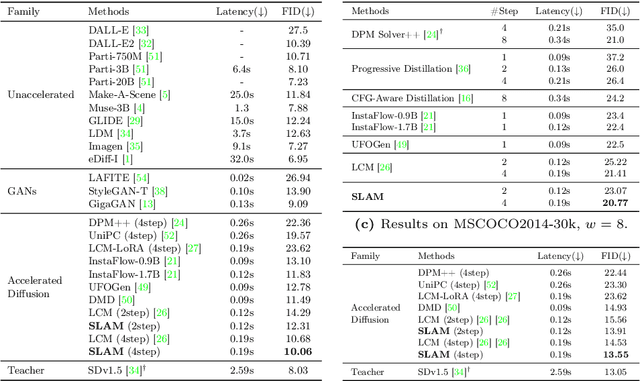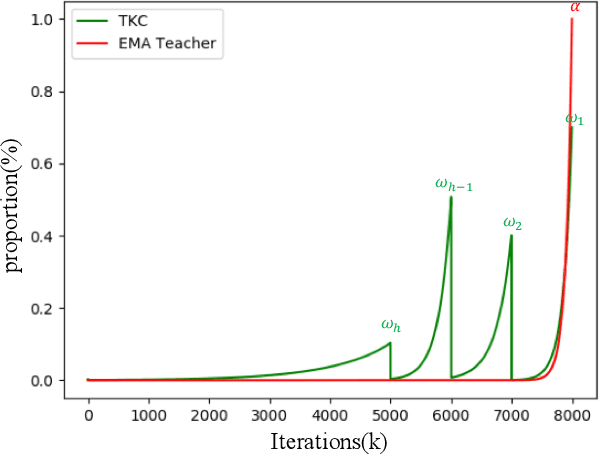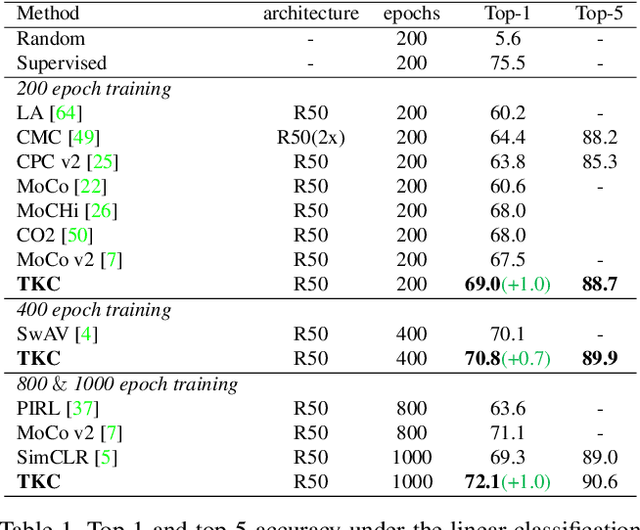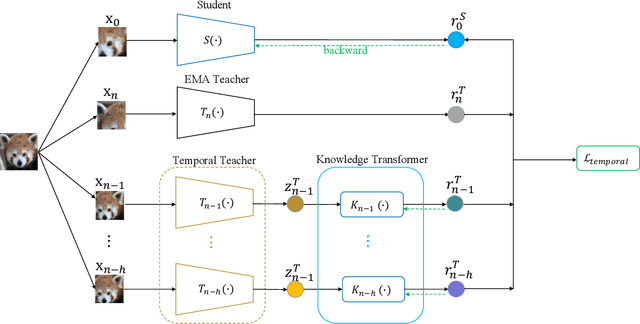Weixin Feng
Accelerating Image Generation with Sub-path Linear Approximation Model
Apr 23, 2024



Abstract:Diffusion models have significantly advanced the state of the art in image, audio, and video generation tasks. However, their applications in practical scenarios are hindered by slow inference speed. Drawing inspiration from the approximation strategies utilized in consistency models, we propose the Sub-path Linear Approximation Model (SLAM), which accelerates diffusion models while maintaining high-quality image generation. SLAM treats the PF-ODE trajectory as a series of PF-ODE sub-paths divided by sampled points, and harnesses sub-path linear (SL) ODEs to form a progressive and continuous error estimation along each individual PF-ODE sub-path. The optimization on such SL-ODEs allows SLAM to construct denoising mappings with smaller cumulative approximated errors. An efficient distillation method is also developed to facilitate the incorporation of more advanced diffusion models, such as latent diffusion models. Our extensive experimental results demonstrate that SLAM achieves an efficient training regimen, requiring only 6 A100 GPU days to produce a high-quality generative model capable of 2 to 4-step generation with high performance. Comprehensive evaluations on LAION, MS COCO 2014, and MS COCO 2017 datasets also illustrate that SLAM surpasses existing acceleration methods in few-step generation tasks, achieving state-of-the-art performance both on FID and the quality of the generated images.
Beyond Bounding Box: Multimodal Knowledge Learning for Object Detection
May 09, 2022



Abstract:Multimodal supervision has achieved promising results in many visual language understanding tasks, where the language plays an essential role as a hint or context for recognizing and locating instances. However, due to the defects of the human-annotated language corpus, multimodal supervision remains unexplored in fully supervised object detection scenarios. In this paper, we take advantage of language prompt to introduce effective and unbiased linguistic supervision into object detection, and propose a new mechanism called multimodal knowledge learning (\textbf{MKL}), which is required to learn knowledge from language supervision. Specifically, we design prompts and fill them with the bounding box annotations to generate descriptions containing extensive hints and context for instances recognition and localization. The knowledge from language is then distilled into the detection model via maximizing cross-modal mutual information in both image- and object-level. Moreover, the generated descriptions are manipulated to produce hard negatives to further boost the detector performance. Extensive experiments demonstrate that the proposed method yields a consistent performance gain by 1.6\% $\sim$ 2.1\% and achieves state-of-the-art on MS-COCO and OpenImages datasets.
Temporal Knowledge Consistency for Unsupervised Visual Representation Learning
Aug 24, 2021



Abstract:The instance discrimination paradigm has become dominant in unsupervised learning. It always adopts a teacher-student framework, in which the teacher provides embedded knowledge as a supervision signal for the student. The student learns meaningful representations by enforcing instance spatial consistency with the views from the teacher. However, the outputs of the teacher can vary dramatically on the same instance during different training stages, introducing unexpected noise and leading to catastrophic forgetting caused by inconsistent objectives. In this paper, we first integrate instance temporal consistency into current instance discrimination paradigms, and propose a novel and strong algorithm named Temporal Knowledge Consistency (TKC). Specifically, our TKC dynamically ensembles the knowledge of temporal teachers and adaptively selects useful information according to its importance to learning instance temporal consistency. Experimental result shows that TKC can learn better visual representations on both ResNet and AlexNet on linear evaluation protocol while transfer well to downstream tasks. All experiments suggest the good effectiveness and generalization of our method.
* To appear in ICCV 2021
 Add to Chrome
Add to Chrome Add to Firefox
Add to Firefox Add to Edge
Add to Edge